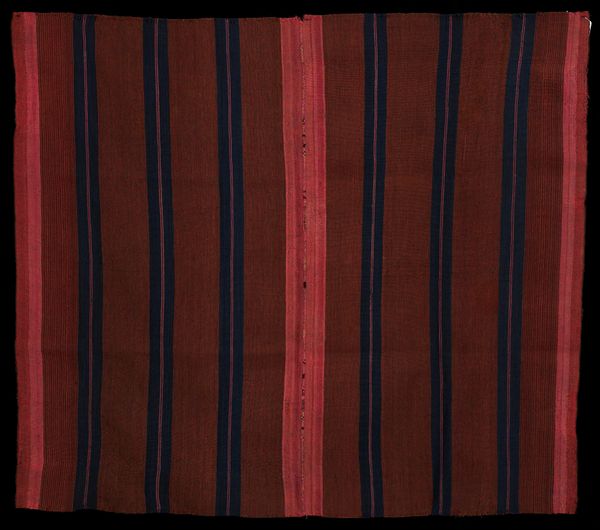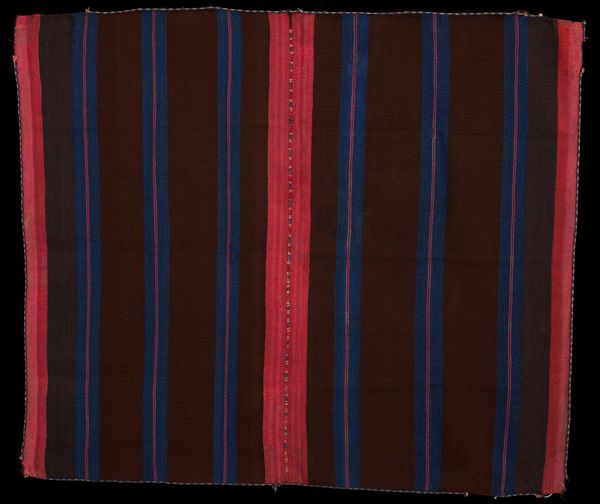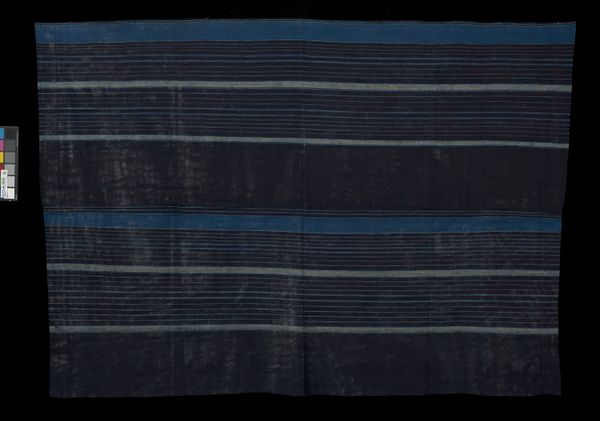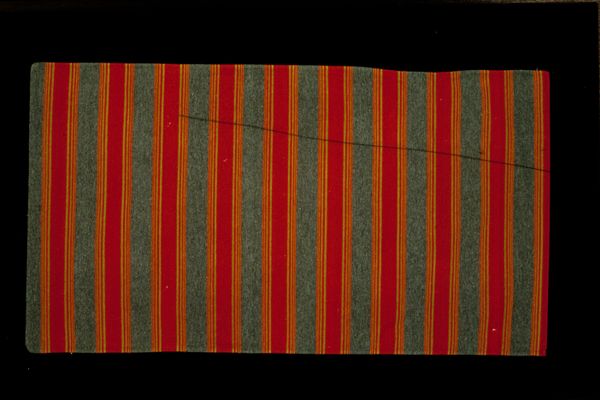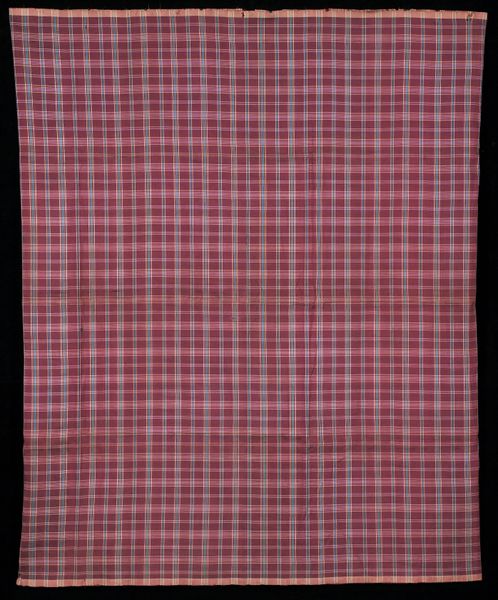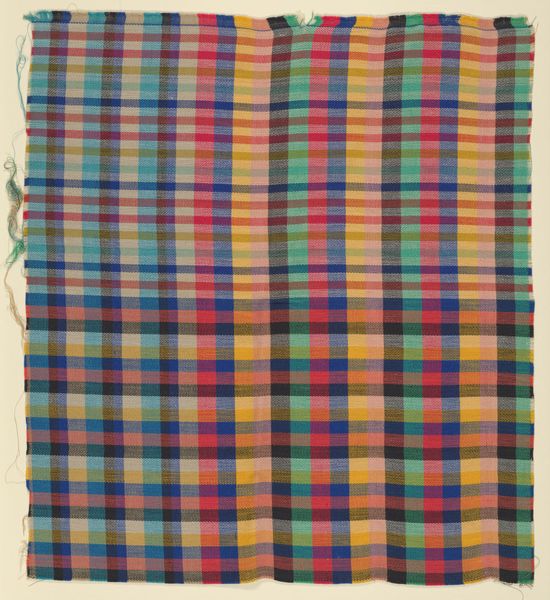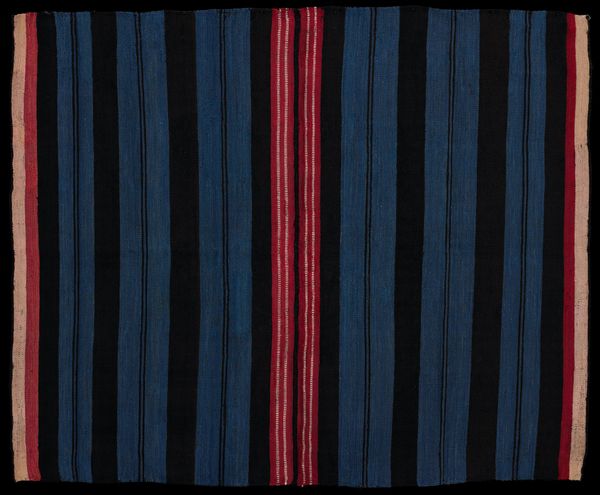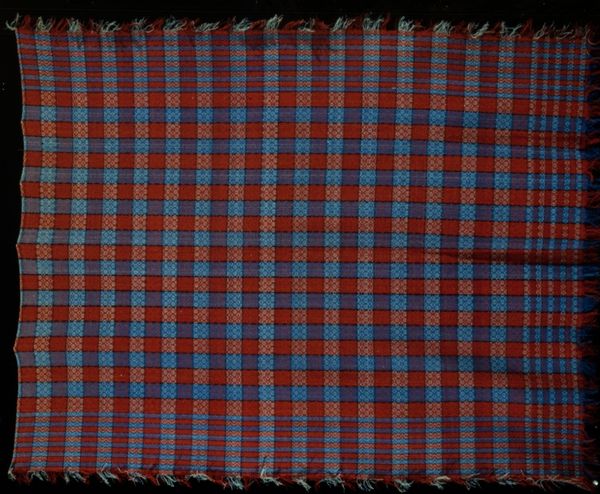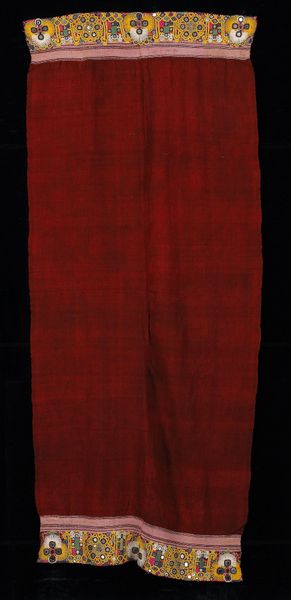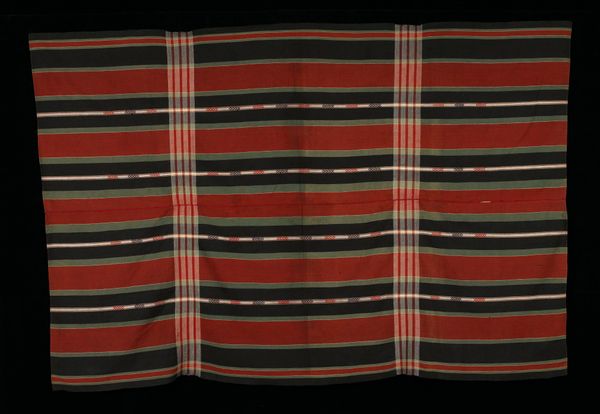
fibre-art, weaving, textile
#
fibre-art
#
weaving
#
textile
#
geometric pattern
#
geometric
#
textile design
#
indigenous-americas
Dimensions: 51 x 43 5/8 in. (129.54 x 110.81 cm)
Copyright: Public Domain
This iscayo, or woman’s mantle, was woven by an Aymara weaver, and is now in the collection of the Minneapolis Institute of Art. It’s made of sheep’s wool, dyed in rich browns, blues and reds. The simple striped design has a powerful presence, due to the weaver’s mastery of technique. You can see it in the even tension of the weave, and the sharp contrast between the colors. The process would have begun with the shearing of the sheep, then the laborious work of spinning the fibers into thread. The wool was likely dyed with natural pigments. The weaving itself would have been done on a backstrap loom, a technology that requires great skill and patience. The result is a textile with both practical and symbolic value. The mantle would have been worn as a sign of status and identity, a testament to the weaver's skill, and to the enduring traditions of the Aymara people. By taking time to consider the making, we recognize that this is far more than just a length of cloth, but a sophisticated artwork with deep cultural meaning.
Comments
No comments
Be the first to comment and join the conversation on the ultimate creative platform.

